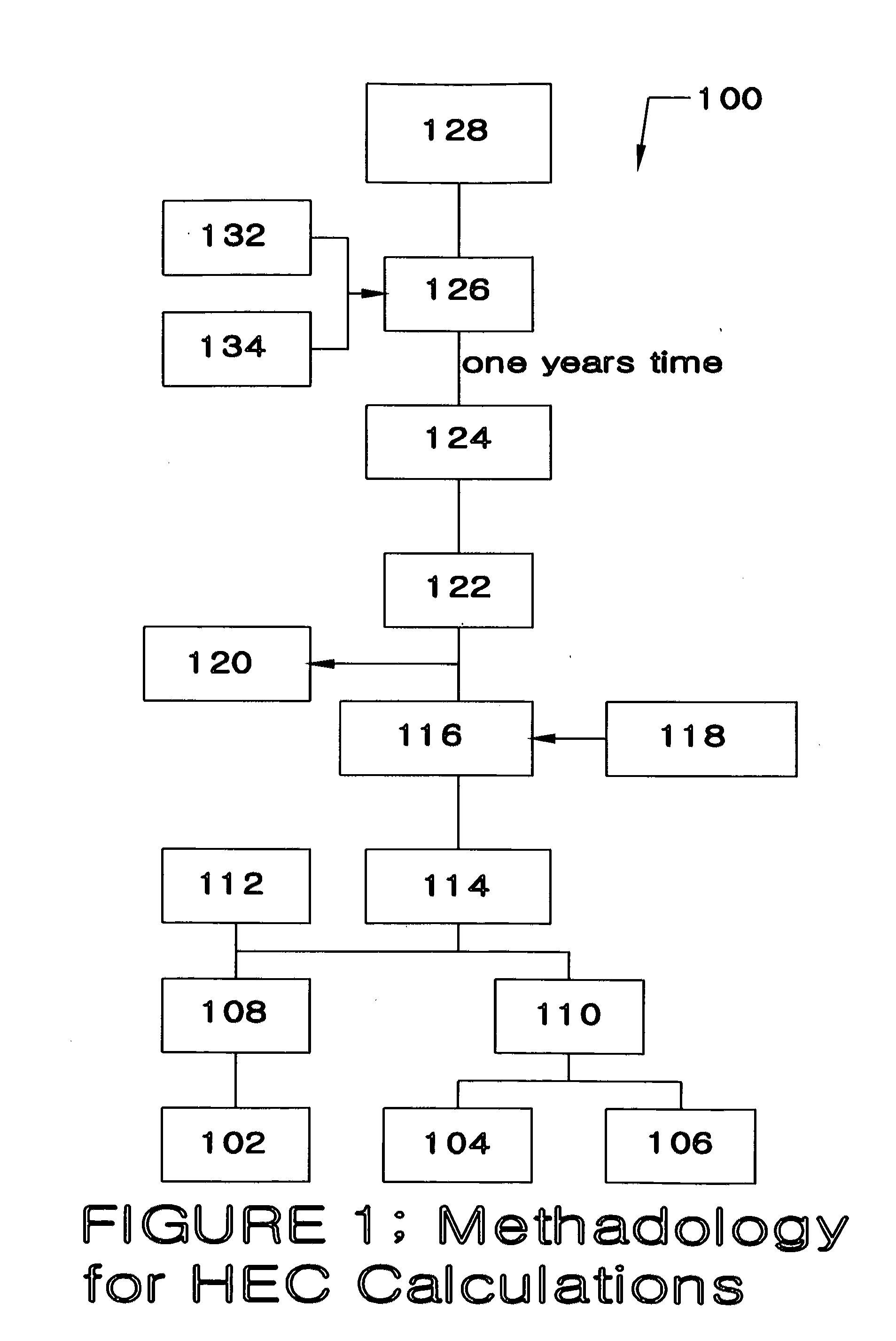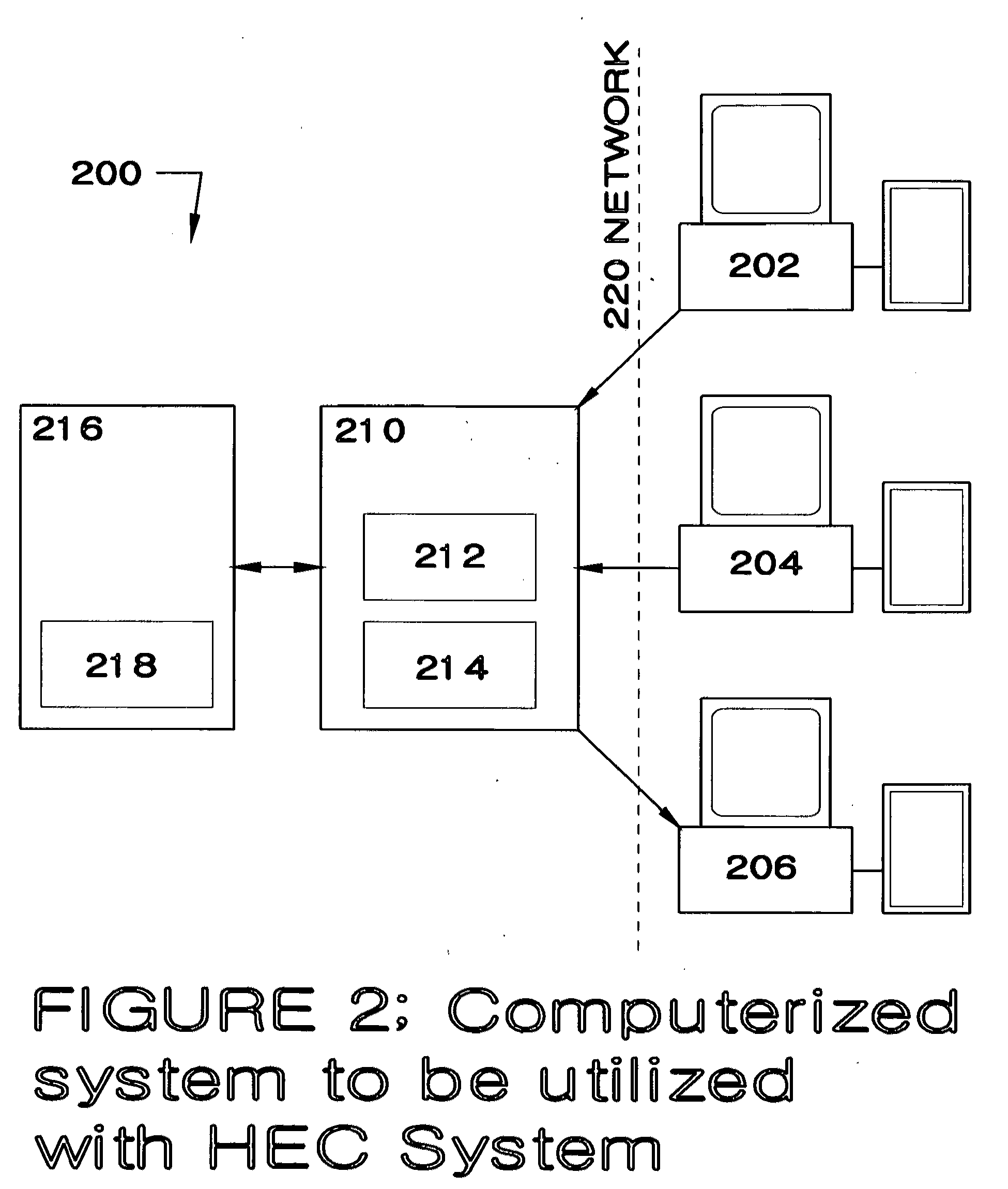System for evaluating energy consumption
a technology for energy consumption and systems, applied in the field of systems for evaluating energy consumption, can solve problems such as the disconnect between reality and the ability of existing platforms to evaluate, let alone analyze and predict the value of energy consumption reduction alternatives in existing construction without extensive/expensive demolition and/or testing, and the platform should be scrapped
- Summary
- Abstract
- Description
- Claims
- Application Information
AI Technical Summary
Benefits of technology
Problems solved by technology
Method used
Image
Examples
Embodiment Construction
[0051]Turning now to the drawings, FIG. 1 shows a method 100 for establishing the baseline energy consumption of a structure in accordance with the best mode contemplated by the inventors. Method 100 begins with steps 104&106, comprising the collection of data defining a structure's historical energy consumption, as supplied by energy providers and consumers. For example step 104 and FIG. 3, Method 300, involves the collection of two to five years of energy bills, step 106&FIG. 4, Method 400, involves the collection of 2-5 years of energy consumption data from other sources. Steps 104&106 can be completed by obtaining hard copies of invoices from the owners of the subject structures or from energy providers. Alternatively the data could be collected electronically from any of these sources in any combination or by directly monitoring energy meters at the subject structure(s).
[0052]In the best mode contemplated by the inventors, when paper invoices are collected in FIG. 1 steps 104&1...
PUM
 Login to View More
Login to View More Abstract
Description
Claims
Application Information
 Login to View More
Login to View More - R&D
- Intellectual Property
- Life Sciences
- Materials
- Tech Scout
- Unparalleled Data Quality
- Higher Quality Content
- 60% Fewer Hallucinations
Browse by: Latest US Patents, China's latest patents, Technical Efficacy Thesaurus, Application Domain, Technology Topic, Popular Technical Reports.
© 2025 PatSnap. All rights reserved.Legal|Privacy policy|Modern Slavery Act Transparency Statement|Sitemap|About US| Contact US: help@patsnap.com



